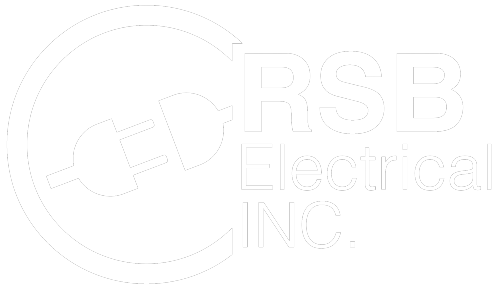Follow the Glow: Artistic Expressions with Track and Accent Lighting
The versatility of track and accent lighting makes them an essential part of modern lighting design, allowing spaces to be practical and visually striking.
Track and accent lighting has revolutionized how spaces are illuminated, offering a unique blend of functionality and artistic expression. These lighting techniques transform ordinary spaces into dynamic environments by highlighting architectural features, artwork, and design elements. The versatility of track and accent lighting makes them an essential part of modern lighting design, allowing spaces to be practical and visually striking. The expertise of an electrician is crucial in creating a lighting system that meets aesthetic and functional needs.
The Versatility of Track Lighting
Track lighting is a flexible solution that allows multiple light fixtures to be displayed on a single track, which can be installed on ceilings or walls. The adjustable nature of track fixtures makes it easy to direct light to specific areas, creating a dynamic and customizable lighting system.
One of track lighting's greatest strengths is its adaptability. Fixtures can be repositioned or added as needs change, making it an excellent choice for flexible spaces. Track lighting is particularly effective for illuminating art collections, accentuating architectural details, or providing focused light in areas such as kitchens or workspaces.
Another advantage of track lighting is energy efficiency, especially when paired with LED bulbs. LEDs use less energy and have a broader lifespan than traditional lighting options. Their low heat output enhances safety and makes them an environmentally friendly choice. An experienced electrician can recommend the best track lighting solutions to suit specific spaces and goals.
Creating Depth with Accent Lighting
Accent lighting adds depth and dimension to spaces by focusing on particular features or objects. This technique creates a visual hierarchy, highlighting focal points such as artwork, sculptures, or textured walls. Accent lighting enhances the overall design of a space by emphasizing its unique elements.
The key to effective accent lighting lies in contrast. Illuminating a feature more brightly than its surroundings creates a dramatic effect that captures attention. Recessed lights, wall-mounted fixtures, or directional track lights are commonly used for accent lighting.
Accent lighting also plays a role in setting a space's mood. By layering accent lighting with general and task lighting, an inviting and harmonious atmosphere can be created. The placement and intensity of accent lights must be carefully planned to attain the desired effect. Consulting an electrician guarantees the lighting design enhances both functionality and aesthetics.
Applications of Track and Accent Lighting
Track and accent lighting offers numerous possibilities for enhancing residential and commercial spaces. In living rooms, track lighting provides versatile illumination for seating areas, bookshelves, or gallery walls. Accent lighting highlights architectural features or decor, adding depth and sophistication.
Kitchens benefit from the targeted illumination of track lighting, which brightens countertops, islands, or sinks. Accent lighting under cabinets or within glass-fronted display cases enhances functionality and aesthetics, creating a polished and modern look.
Accent lighting that highlights headboards, artwork, or shelving in bedrooms adds warmth and character. Track lighting adds flexibility, allowing the light to adapt to various activities, such as reading or relaxing.
Accent lighting showcases design elements or creates visual interest, making hallways and entryways more inviting. Track lighting provides the necessary illumination for safety and navigation while maintaining a clean and elegant appearance.
Design Considerations
A successful track and accent lighting design requires careful consideration of placement, spacing, and fixture selection. Fixtures should be positioned to avoid glare and shadows while providing adequate illumination for focal points. The size and layout of the space influence the arrangement of the lights.
Selecting the appropriate color temperature and bulb type is essential for creating the desired ambiance. Warm tones create an inviting feel, while cooler tones are better for task-oriented spaces. LED bulbs are popular for track and accent lighting because of their energy efficiency, durability, and versatility.
Dimmable fixtures offer additional flexibility, allowing the lighting intensity to be adjusted for different occasions or activities. An electrician's expertise is invaluable in designing a lighting system that meets the space's specific needs while complying with safety and electrical standards.
The Role of an Electrician
Professional installation is pivotal to achieving the full potential of track and accent lighting. An electrician evaluates the space, wiring, and structural considerations to create a lighting system that is both functional and visually appealing. Proper installation minimizes issues such as uneven lighting, flickering, or electrical faults.
An electrician is vital in integrating energy-efficient components, such as LED bulbs or smart controls, into the lighting design. These upgrades enhance the system's performance and sustainability, reducing energy consumption and maintenance costs.
Routine maintenance, including cleaning fixtures and replacing bulbs, helps preserve the appearance and functionality of track and accent lighting. Upgrading components or adding smart features verifies the system remains adaptable to changing needs and styles.
Track and accent lighting offer endless opportunities for artistic expression and functional illumination. By highlighting key features and creating layers of light, these techniques enhance the ambiance and character of any space. An experienced electrician provides the expertise needed to design, install, and maintain a lighting system that elevates a home or business's aesthetic and practical qualities. Thoughtful planning and professional execution transform ordinary spaces into extraordinary environments filled with light and artistry.

